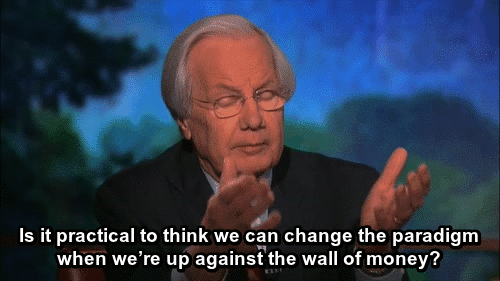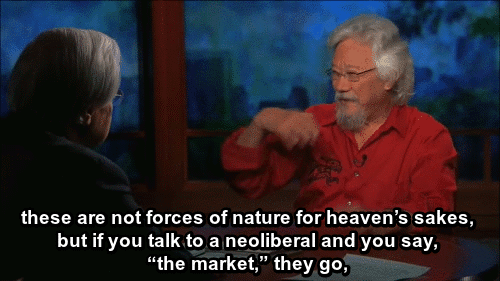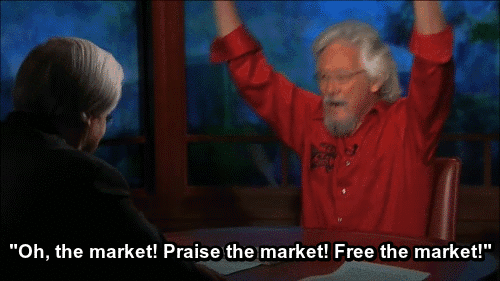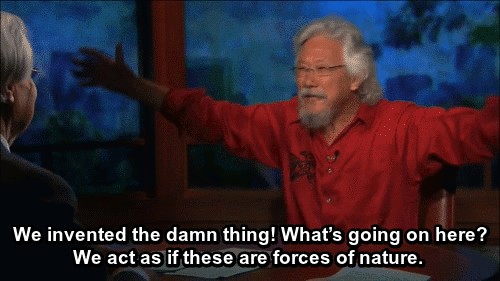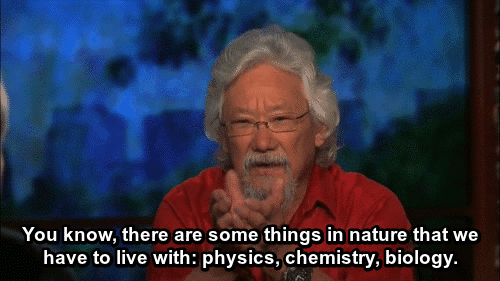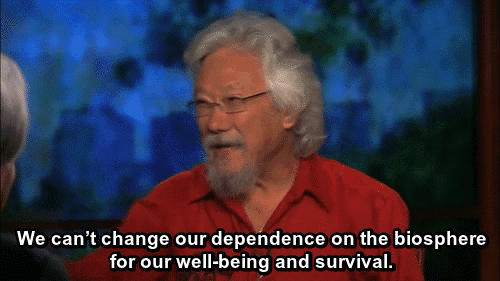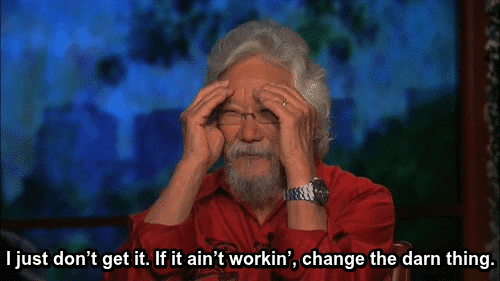Climate Change - Blog Posts
To add to this (or, on a side note), something I am quite scared about are bats. Or, rather, the conservation of bats (not being scared of the lil'sky kittens/sky dogs).
WNS is spreading onto the Western Seaboard despite efforts to contain it - and, arguably, I'm starting to suspect purposeful intent behind such contamination events.
Why?
Pesticides. Not as much because of pesticides, but that the presence of bats/bat colonies means the companies that make pesticides lose out on a percentage of potential profits. If companies in the wind energy sector already would rather continue killing bats en masse during operations - and especially during migration season - instead of accepting a ~1% loss of revenue (and potentially increasing the service life of a wind station in the process), and this is while there exists at least some attempt at oversight of those companies (even if actually attempting to enforce consequences on them seems to be absolutely frickin' toothless)... ... like, these pesticide companies have an incentive to potentially wipe out as many insectivorous bat colonies, if not entire species, as they can. (Perimyotis subflavus/tricolored bats have lost almost 97% of their pre-WNS recorded population. Myotis lucifugus/little brown bats; about 90%...)
---
...And then there's the prospect of state-level polities/significantly-sized paramilitary organizations potentially restarting Project X-Ray. Potentially for destroying the weaponized bats' own colonies. At least, the wild ones - demented minds could simultaneously set up a program for breeding contained populations for the purposes of weaponization/warfare.
'Cause Project X-Ray is a frickin' terrifying concept.
---
anyway, just going to end this fear vent with a pair of rage-invoking videos on a related topic re: Myotis septentrionalis. WNS hit that population hard too. Somewhere in between PESU and MYLU tolls.
Planet's Fucked: What Can You Do To Help? (Long Post)
Since nobody is talking about the existential threat to the climate and the environment a second Trump term/Republican government control will cause, which to me supersedes literally every other issue, I wanted to just say my two cents, and some things you can do to help. I am a conservation biologist, whose field was hit substantially by the first Trump presidency. I study wild bees, birds, and plants.
In case anyone forgot what he did last time, he gagged scientists' ability to talk about climate change, he tried zeroing budgets for agencies like the NOAA, he attempted to gut protections in the Endangered Species Act (mainly by redefining 'take' in a way that would allow corporations to destroy habitat of imperiled species with no ramifications), he tried to do the same for the Migratory Bird Treaty Act (the law that offers official protection for native non-game birds), he sought to expand oil and coal extraction from federal protected lands, he shrunk the size of multiple national preserves, HE PULLED US OUT OF THE PARIS CLIMATE AGREEMENT, and more.
We are at a crucial tipping point in being able to slow the pace of climate change, where we decide what emissions scenario we will operate at, with existential consequences for both the environment and people. We are also in the middle of the Sixth Mass Extinction, with the rate of species extinctions far surpassing background rates due completely to human actions. What we do now will determine the fate of the environment for hundreds or thousands of years - from our ability to grow key food crops (goodbye corn belt! I hated you anyway but), to the pressure on coastal communities that will face the brunt of sea level rise and intensifying extreme weather events, to desertification, ocean acidification, wildfires, melting permafrost (yay, outbreaks of deadly frozen viruses!), and a breaking down of ecosystems and ecosystem services due to continued habitat loss and species declines, especially insect declines. The fact that the environment is clearly a low priority issue despite the very real existential threat to so many people, is beyond my ability to understand. I do partly blame the public education system for offering no mandatory environmental science curriculum or any at all in most places. What it means is that it will take the support of everyone who does care to make any amount of difference in this steeply uphill battle.
There are not enough environmental scientists to solve these issues, not if public support is not on our side and the majority of the general public is either uninformed or actively hostile towards climate science (or any conservation science).
So what can you, my fellow Americans, do to help mitigate and minimize the inevitable damage that lay ahead?
I'm not going to tell you to recycle more or take shorter showers. I'll be honest, that stuff is a drop in the bucket. What does matter on the individual level is restoring and protecting habitat, reducing threats to at-risk species, reducing pesticide use, improving agricultural practices, and pushing for policy changes. Restoring CONNECTIVITY to our landscape - corridors of contiguous habitat - will make all the difference for wildlife to be able to survive a changing climate and continued human population expansion.
**Caveat that I work in the northeast with pollinators and birds so I cannot provide specific organizations for some topics, including climate change focused NGOs. Scientists on tumblr who specialize in other fields, please add your own recommended resources. **
We need two things: FUNDING and MANPOWER.
You may surprised to find that an insane amount of conservation work is carried out by volunteers. We don't ever have the funds to pay most of the people who want to help. If you really really care, consider going into a conservation-related field as a career. It's rewarding, passionate work.
At the national level, please support:
The Nature Conservancy
Xerces Society for Invertebrate Conservation
Cornell Lab of Ornithology (including eBird)
National Audubon Society
Federal Duck Stamps (you don't need to be a hunter to buy one!)
These first four work to acquire and restore critical habitat, change environmental policy, and educate the public. There is almost certainly a Nature Conservancy-owned property within driving distance of you. Xerces plays a very large role in pollinator conservation, including sustainable agriculture, native bee monitoring programs, and the Bee City/Bee Campus USA programs. The Lab of O is one of the world's leaders in bird research and conservation. Audubon focuses on bird conservation. You can get annual memberships to these organizations and receive cool swag and/or a subscription to their publications which are well worth it. You can also volunteer your time; we need thousands of volunteers to do everything from conducting wildlife surveys, invasive species removal, providing outreach programming, managing habitat/clearing trails, planting trees, you name it. Federal Duck Stamps are the major revenue for wetland conservation; hunters need to buy them to hunt waterfowl but anyone can get them to collect!
THERE ARE DEFINITELY MORE, but these are a start.
Additionally, any federal or local organizations that seek to provide support and relief to those affected by hurricanes, sea level rise, any form of coastal climate change...
At the regional level:
These are a list of topics that affect major regions of the United States. Since I do not work in most of these areas I don't feel confident recommending specific organizations, but please seek resources relating to these as they are likely major conservation issues near you.
PRAIRIE CONSERVATION & PRAIRIE POTHOLE WETLANDS
DRYING OF THE COLORADO RIVER (good overview video linked)
PROTECTION OF ESTUARIES AND SALTMARSH, ESPECIALLY IN THE DELAWARE BAY AND LONG ISLAND (and mangroves further south, everglades etc; this includes restoring LIVING SHORELINES instead of concrete storm walls; also check out the likely-soon extinction of saltmarsh sparrows)
UNDAMMING MAJOR RIVERS (not just the Colorado; restoring salmon runs, restoring historic floodplains)
NATIVE POLLINATOR DECLINES (NOT honeybees. for fuck's sake. honeybees are non-native domesticated animals. don't you DARE get honeybee hives to 'save the bees')
WILDLIFE ALONG THE SOUTHERN BORDER (support the Mission Butterfly Center!)
INVASIVE PLANT AND ANIMAL SPECIES (this is everywhere but the specifics will differ regionally, dear lord please help Hawaii)
LOSS OF WETLANDS NATIONWIDE (some states have lost over 90% of their wetlands, I'm looking at you California, Ohio, Illinois)
INDUSTRIAL AGRICULTURE, esp in the CORN BELT and CALIFORNIA - this is an issue much bigger than each of us, but we can work incrementally to promote sustainable practices and create habitat in farmland-dominated areas. Support small, local farms, especially those that use soil regenerative practices, no-till agriculture, no pesticides/Integrated Pest Management/no neonicotinoids/at least non-persistent pesticides. We need more farmers enrolling in NRCS programs to put farmland in temporary or permanent wetland easements, or to rent the land for a 30-year solar farm cycle. We've lost over 99% of our prairies to corn and soybeans. Let's not make it 100%.
INDIGENOUS LAND-BACK EFFORTS/INDIGENOUS LAND MANAGEMENT/TEK (adding this because there have been increasing efforts not just for reparations but to also allow indigenous communities to steward and manage lands either fully independently or alongside western science, and it would have great benefits for both people and the land; I know others on here could speak much more on this. Please platform indigenous voices)
HARMFUL ALGAL BLOOMS (get your neighbors to stop dumping fertilizers on their lawn next to lakes, reduce agricultural runoff)
OCEAN PLASTIC (it's not straws, it's mostly commercial fishing line/trawling equipment and microplastics)
A lot of these are interconnected. And of course not a complete list.
At the state and local level:
You probably have the most power to make change at the local level!
Support or volunteer at your local nature centers, local/state land conservancy non-profits (find out who owns&manages the preserves you like to hike at!), state fish & game dept/non-game program, local Audubon chapters (they do a LOT). Participate in a Christmas Bird Count!
Join local garden clubs, which install and maintain town plantings - encourage them to use NATIVE plants. Join a community garden!
Get your college campus or city/town certified in the Bee Campus USA/Bee City USA programs from the Xerces Society
Check out your state's official plant nursery, forest society, natural heritage program, anything that you could become a member of, get plants from, or volunteer at.
Volunteer to be part of your town's conservation commission, which makes decisions about land management and funding
Attend classes or volunteer with your land grant university's cooperative extension (including master gardener programs)
Literally any volunteer effort aimed at improving the local environment, whether that's picking up litter, pulling invasive plants, installing a local garden, planting trees in a city park, ANYTHING. make a positive change in your own sphere. learn the local issues affecting your nearby ecosystems. I guarantee some lake or river nearby is polluted
MAKE HABITAT IN YOUR COMMUNITY. Biggest thing you can do. Use plants native to your area in your yard or garden. Ditch your lawn. Don't use pesticides (including mosquito spraying, tick spraying, Roundup, etc). Don't use fertilizers that will run off into drinking water. Leave the leaves in your yard. Get your school/college to plant native gardens. Plant native trees (most trees planted in yards are not native). Remove invasive plants in your yard.
On this last point, HERE ARE EASY ONLINE RESOURCES TO FIND NATIVE PLANTS and LEARN ABOUT NATIVE GARDENING:
Xerces Society Pollinator Conservation Resource Center
Pollinator Pathway
Audubon Native Plant Finder
Homegrown National Park (and Doug Tallamy's other books)
National Wildlife Federation Native Plant Finder (clunky but somewhat helpful)
Heather Holm (for prairie/midwest/northeast)
MonarchGard w/ Benjamin Vogt (for prairie/midwest)
Native Plant Trust (northeast & mid-atlantic)
Grow Native Massachusetts (northeast)
Habitat Gardening in Central New York (northeast)
There are many more - I'm not familiar with resources for western states. Print books are your biggest friend. Happy to provide a list of those.
Lastly, you can help scientists monitor species using citizen science. Contribute to iNaturalist, eBird, Bumblebee Watch, or any number of more geographically or taxonomically targeted programs (for instance, our state has a butterfly census carried out by citizen volunteers).
In short? Get curious, get educated, get involved. Notice your local nature, find out how it's threatened, and find out who's working to protect it that you can help with. The health of the planet, including our resilience to climate change, is determined by small local efforts to maintain and restore habitat. That is how we survive this. When government funding won't come, when we're beat back at every turn trying to get policy changed, it comes down to each individual person creating a safe refuge for nature.
Thanks for reading this far. Please feel free to add your own credible resources and organizations.
everyone please read this and share if you can.
Brazil is going through one of the worst climatic crisis ever seen.
i live in the southernmost state, Rio Grande do Sul. we have been suffering from extreme, nonstop rainstorms for a week now. the rivers are flooding, reaching 4-6 meters above their natural level. people are being rescued by helicopters, neighborhoods are being evacuated. entire cities are slowly but surely becoming submerged in water. 60 people missing and counting. 32 deaths and counting.
and this is not new. last november also had a flood like this one. 50 dead, many material losses. it happened again this january, with thousands being left without power or water for days.
three catastrophical disasters within less than a year. three disasters only a few months apart.
this is not natural.
unsustainable agricultural practices and politics led to this. a complete disregard for nature led to this. greed led to this. always greed.
when it comes to the climate crisis, i cannot stress this enough: we need to act now if we still want to live. disasters like this are going to happen more often and they're going to be much, much worse. this flood is being considered the worst climatic catastrophe in the history of my state. i don't know how long it will take for another bigger one to happen and take its place. i just know it will be sooner than it should.
links to donate (if you can't donate, sharing already helps a lot):
link for non-brazilians (paybox)
link for brazilians
pix assufrgs
will update more links later. in the meantime, pray for us.
Brazil's Rio Grande do Sul is currently flooded
UPDATE MAY 9TH 2024: MORE INFORMATION ABOUT DONATIONS CAN BE FOUND HERE. PLEASE REBLOG THIS VERSION OF THE POST, AND THANK YOU.
I don't make these kinds of posts, but Rio Grande do Sul (a brazilian estate) is going through its worst natural catastrophe in recorded history and I need everyone to know about this. Its currently looking like this:


What is going on
Most of Brazil suffers from yearly floods during the rain season. These floods most of the time aren't bad, with water going away a few hours later. Sometimes they are a nightmare, with people losing their homes and most if not all belongings. But this?

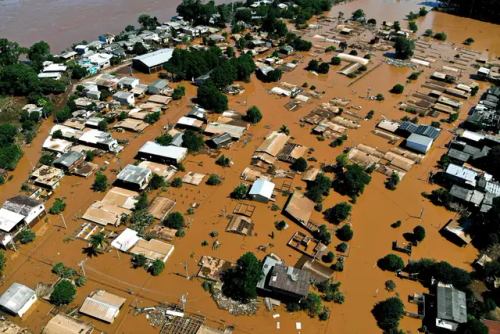
This is not fucking normal.
Currently (May 6th, 2024) there's +80 confirmed deaths and 873 thousand people are being affected by these historical floods. Eight hundred and seventy three THOUSAND people. Once again: THIS. IS. NOT. NORMAL.
Rio Grande has 496 cities, and currently, 364 are reporting problems related to this. It's almost the entirety of Rio Grande - and you know how big Rio Grande is? If you're from the USA, its just a bit bigger than Colorado, and just a bit smaller than Nevada. If you are European, Rio Grande is bigger than the United Kingdom. Can you imagine if almost the entirety of the UK was underwater? Because I sure fucking can just by watching brazilian news!
Rio Grande expects floods. It rains a lot in Brazil. What no one expect is having to deal with 2,30 meters - 7'7 feet for reference - ABOVE the expected flooding level, which is 3 meters (9'10 feet). This means that there were 5,26 meters (17'3 ft) of water. Chart for comparison:

I live in São Paulo, which is completely unaffected by what is going on over there, but I need people to be aware of this. Why?
How YOU can help
A single US dollar is almost five reais. One euro is around 5,50. This may not be much to a lot of people reading this, but literally anything helps. If you donate U$10, it's R$50 for us. If it's euros, then it's R$55,00.
If you can't donate, please just reblog this post.
INTERNATIONAL DONATIONS INFO
If you use euros, here's the donation info:
Standard Chartered Bank Frankfurt Bank
Swift: SCBLDEFX
Bank Account: 007358304
If you use dollars, here's the donation info:
Standard Chartered Bank New York Bank
Swift: SCBLUS33
Bank Account: 3544032986001
You need to inform this in order to donate:
IBAN Code: BR5392702067001000645423206C1
Name: Associação dos Bancos no Estado do Rio Grande do Sul
CNPJ: 92.958.800/0001-38
NATIONAL DONATIONS INFO
If you're brazilian, oi, aqui tá o Pix do canal SOS Rio Grande do Sul para você ajudar:
Pix: CNPJ: 92.958.800/0001-38 Banco do Estado do Rio Grande do Sul ou Associação dos Bancos no Estado do Rio Grande do Sul

Sorry to bring negativity but President Biden plans to pass a project in which 180,000 barrels of oil will be produced per day, hurting the environment in Alaska and making Global Warming worse.
Pls reblog this and share it (on other social medias too pls), this project should not pass.



Put on my boots and walked outside at 3am to take this picture. This is Anchorage Alaska









Move along, nothing to see here. Just blizzards in Florida + record snowfall in Mississippi and Louisiana + climate change.


ES|| Más ilustraciones del Calendario Montessori 2023, el cual, como ya sabréis, está enfocado en distintas maneras de cuidar el planeta. Una de las cosas más importantes para mejorar el medio ambiente es reducir el consumo de plásticos y hay infinidad de maneras de hacerlo, por ejemplo, buscar juguetes de otros materiales. La verdad es que siempre me sorprende la gran variedad de alternativas que hay a los típicos juegos de plástico. A mí, personalmente, me encantan los juguetes de madera con formas orgánicas e inspiradas en la naturaleza (sobre todo si son de madera recogida de forma sostenible y de proximidad)! 🌱
EN|| More illustrations from the 2023 Montessori Calendar, which, as you already know, is focused on different ways to take care of the planet. One of the most important things to improve the environment is to reduce plastic consumption and there are countless ways to do this, for example, looking for toys made of other materials. The truth is I’m amazed by the wide variety of alternatives there are to typical plastic toys. I personally love wooden toys with organic shapes inspired by nature (especially if they are made locally and from sustainable wood)!🌱

ES|| Hoy es el día mundial de las abejas! Las abejas, junto a mariposas, polillas, avispas, abejorros, mosca abejas, hormigas, moscas y escarabajos (por decir algunos insectos, hay muchísimos más y muchísimas especies en cada categoría!!) son unas de las principales encargadas de la polinización de las flores, una función vital para la biodiversidad terrestre y para nuestra alimentación. Sin embargo, están desapareciendo! Un 40% de los polinizadores invertebrados, en particular abejas y mariposas, y un 17% de los polinizadores vertebrados, como los murciélagos y los pájaros, se enfrentan a la extinción. Esta cifra aun es más alta si pensamos en las islas. En Europa una de cada diez especies de abejas está en peligro de extinción. Este peligroso, devastador y triste declive se debe a varias causas como la pérdida y deterioro de sus hábitats, principalmente a manos de los humanos, las prácticas de la agricultura industrializada, como los monocultivos, el uso de plaguicidas y otros productos químicos, los parásitos y enfermedades, las especies vegetales y animales invasoras y los impactos del cambio climático como la subida de la temperatura que afecta a la floración de las plantas y la escasez de agua.. Pensemos en estos pequeños, pero importantísimos, seres adorables, que parecen pompones voladores, y cambiemos nuestros hábitos de consumo y de vida! Comprar y promover los productos no procesados, de temporada, ecológicos y de proximidad (a mi me encantan los proyectos de agricultura regenerativa), respetar sus hábitats, no caer en el monocultivo y plantar márgenes de flores nativas silvestres son algunos de los pequeños pasos que podemos seguir para ayudarlas.🐝☀️
EN|| Today is world bee day! Bees, along with butterflies, moths, wasps, bumblebees, bee flies, ants, flies and beetles (to name a few insects, there are many more and many species in each category!!) are one of the main characters in charge of pollinating flowers, a vital function for terrestrial biodiversity and for our food chain. However, they’re disappearing! 40% of invertebrate pollinators, in particular bees and butterflies, and 17% of vertebrate pollinators, such as bats and birds, face extinction. This figure is even higher if we think of islands. In Europe, one in ten species of bees is in danger of extinction. This dangerous, devastating and sad decline is due to several causes such as the loss and deterioration of their habitats, mainly at the hands of humans, the practices of industrialized agriculture, such as monocultures, the use of pesticides and other chemical products, parasites and diseases, exotic invasive plants and animal species and the impacts of climate change such as the rise in temperature that affects the flowering of plants and the lack of water. Let's think about these small, but very important, adorable beings, who look like flying pompoms, and let's change our consumption and life habits! Buying and promoting unprocessed, seasonal, organic and local products (I love regenerative agriculture projects), respecting their habitats, not falling into monoculture and planting borders of wild native flowers are some of the small steps that we can do to help this little fellows. 🐝☀️

EN|| Sharks are one of the most endangered animals on planet Earth, it’s estimated that in the last 50 years their population has been reduced by 70%. There’re 17 different species of shark in danger of extinction, like this one in the illustration, the Carcharias Taurus. This problem is especially significant in the Atlantic where fishing fleets can deploy 1,200 km of fishing lines with 28,000 hooks where all kinds of animals are trapped, especially sharks. Furthermore there’s also the indiscriminate fishing of the babys, which, taking into account that most shark species are characterized by having a low reproductive rate, a slow growth rate and late sexual maturation, makes it impossible for sharks to overcome their population decline, making them very susceptible to overfishing. On the other hand, climate change also affects sharks, the water temperature is increasing, the oxygen content of the water is decreasing, especially in coastal areas, and the waters are becoming more acidic. One of the main reasons why protection measures have not been put in place for these species is because the shark meat market has many economic interests, since it’s used for cosmetics, nutrition products and food. Sharks, due to their importance in the food chain, play a fundamental role in the sustainability of marine life and in the ability of these ecosystems to mitigate and adapt to climate change. Protecting them has to be a priority! 🦈 Information from @greenpeace_esp @greenpeace
ES|| Los tiburones son uno de los animales más amenazados del planeta Tierra, se calcula que en los últimos 50 años su población se ha reducido un 70%. Hay 17 especies distintas de tiburón en peligro de extinción, como este de la ilustración, el Carcharias Taurus, también llamado tiburón Toro o “Solraig clapejat” en catalán. Este problema es especialmente significativo en el Atlántico donde la flotas pesqueras pueden llegar a desplegar 1.200 km de líneas de pesca con 28.000 anzuelos donde quedan atrapados todo tipo de animales, sobretodo tiburones. A todo esto se le añade la pesca indiscriminada de crías, que teniendo en cuenta que la mayoría de especies de tiburón se caracterizan por tener una baja reproductividad, una tasa de crecimiento lenta y una maduración sexual tardía, hace imposible que los tiburones se sobrepongan al declive de su población haciéndolos muy susceptibles a la sobrepesca. Por otro lado el cambio climático también afecta a los tiburones, la temperatura del agua esta aumentando, el contenido de oxigeno del agua esta disminuyendo sobretodo en las zonas costeras y las aguas se están acidificando. Uno de los principales motivos por los que no se han creado medidas de protección para estas especies es porque el mercado de la carne de tiburón mueve muchos intereses económicos, ya que se usa para cosméticos, productos de nutrición y para alimentación. Los tiburones, debido a su importancia en la cadena trófica, tienen un papel fundamental en la sostenibilidad de la vida marina y en la capacidad de estos ecosistemas para mitigar y adaptarse al cambio climático. Protegerlos tiene que ser una prioridad!🦈 Información de @greenpeace_esp @greenpeace

Calendario Montessori 2023 || Montessori calendar 2023

Climate change is real (2019) - anna florsdefum

ESP || Lamentablemente los koalas aunque parecen un peluche tremendamente adorable están en peligro de extinción.
EN || Although they look like an absolutely adorable teddy bear, koalas are unfortunately in danger of extinction.

WEB
CAT || Aquesta setmana ha sigut el Dia Mundial del Medi Ambient i crec que és un bon moment per a recordar aquesta il·lustració sobre el fosc futur dels óssos polars. Tot i que vivim en uns temps problemàtics i durs, és important recordar que hem de tenir cura del nostre planeta de totes les maneres que ens siguin possibles. La contaminació, a causa de les nostres emissions de gas o dels nostres residus plàstics genera repercussions catastròfiques com l’augment de la temperatura global de la Terra i dels oceans, la reducció de les plaques de gel a les glaceres de tot el món, la reducció de la neu primaveral a l’hemisferi nord, l’augment del nivell del mar, la disminució del gel marí àrtic que es forma més tard a la tardor i es fon més aviat a la primavera, la mort de molts animals aquàtics a causa dels bloqueigs gastrointestinals i alternacions en els patrons de reproducció i alimentació, l’augment del risc d’incendis forestals, així com moltes altres víctimes mortals. Esta a les nostres mans mantindre la rica diversitat del nostre planeta terra.☀️🌍
ESP || Esta semana ha sido el día mundial del medio ambiente, recupero esta ilustración sobre el futuro de los osos polares. Aunque vivimos en tiempos convulsos es importante recordar que tenemos que cuidar nuestro planeta y acabar con la contaminación. El incremento del efecto invernadero, debido a nuestras emisiones de gases, genera repercusiones catastróficas como el aumento de la temperatura global de la Tierra y de los océanos, la reducción de las capas de hielo en los glaciares de todo el mundo, incluyendo los Alpes, Alaska, el Himalaya, etc., la reducción de la nieve de primavera en todo el hemisferio norte, el aumento del nivel del mar y la disminución de hielo marino del Ártico el cual se forma cada vez más tarde en otoño y se deshace más pronto en primavera. Sólo en los últimos 30 años se han perdido tres cuartas partes de la capa flotante de hielo del Ártico, la casa de los osos polares entre otros animales.☀️🌍
ENG || These week was World Environment Day and I think is a good time to bring back this illustration about the dark future of polar bears. Although we live in troubled times, it’s important to remember that we have to take care of our planet every way we can. Pollution, due to our gas emissions or our plastic waste, generates catastrophic repercussions such as the increase in global temperature of the Earth and the oceans, the reduction of ice sheets on glaciers around the world, the reduction of spring snow across the Northern Hemisphere, rising sea levels, decreasing Arctic sea ice which forms later in the fall and melts sooner in spring, death of many aquatic animals due to gastrointestinal blockages and alternations in reproduction and feeding patterns, increased risk of forest fires, and many other fatalities. It’s in our hands to maintain the rich diversity of our planet earth.☀️🌍

CLIMATE CHANGE IS REAL (2019)
ESP || Hace un tiempo la ilustradora @emmaillustrate creo la Interesante campaña “ kidlit4climate” para solidarizarse con "climate strike", un movimiento muy necesario para luchar contra las políticas que no tienen en cuenta el medio ambiente. Yo me quise unir aportando mi granito de arena con un universo que tiene claro que el cambio climático es real y pide ayuda para parar la contaminación que generamos de mil maneras diferentes y que está matando el planeta y muchas de las especies que lo habitan. 🌙🌎☀️ ENG || Some time ago the illustrator @emmaillustrate created the absolutely awesome campaign #kidlit4climate to show solidarity with the much needed #climatestrike movement. I wanted to contribute with a universe who has it clear: climate change is real and we need to stop the pollution that we generate in a thousand different ways and that is killing the planet and many of the species that inhabit it. ☀️🌎🌙
WEB

Plastic whales || ballenas de pástico || balenes de plàstic (2019)
ESP || Si no cuidamos nuestro planeta quien lo hará? Siempre he sido una enamorada de la naturaleza por este motivo ha sido un placer aportar mi granito de arena para intentar concienciar sobre el importante problema que generan los plásticos sobretodo cuando acaban en el mar destrozando todo el ecosistema marino. Evitemos los plásticos de un solo uso para tener un océano limpio y lleno de vida, un pequeño gesto puede hacer mucho! 🐋💙
ENG || If we don't take care of our planet who will do it? I have always loved nature for this reason it has been a pleasure to try to raise awareness about the important problem that plastics generate, especially when they end up at sea destroying the entire marine ecosystem. Let's avoid single-use plastics to have a clean and full of life ocean. A small gesture can do a lot! 🐋💙
web

CLIMATE CHANGE IS REAL (2019)
ESP ||Des de pequeñita he sido una enamorada de la naturaleza y por este motivo la lucha contra el cambio climático es muy importante para mi. "El cambio climático es real" es un proyecto para crear conciencia sobre la lamentable situación que estamos generando en el Ártico.El incremento del efecto invernadero, debido a nuestras emisiones de gases, genera repercusiones catastróficas como el aumento de la temperatura global de la Tierra y de los océanos, la reducción de las capas de hielo en los glaciares de todo el mundo, incluyendo los Alpes, Alaska, el Himalaya, etc., la reducción de la nieve de primavera en todo el hemisferio norte, el aumento del nivel del mar y la disminución de hielo marino del Ártico el cual se forma cada vez más tarde en otoño y se deshace más pronto en primavera. Sólo en los últimos 30 años se han perdido tres cuartas partes de la capa flotante de hielo del Ártico, la casa de los osos polares entre otros animales.La población de osos polares se estima entre 22.000 y 31.000 ejemplares en todo el mundo, lo que la califica de especie vulnerable. Este descenso de la población se debe, principalmente, a su dependencia del hielo marino del Ártico para viajar, aparearse, descansar y sobre todo para alimentarse, ya que su dieta está formada de otros animales que habitan sobre las grandes masas de hielo, como las focas. Sólo los osos polares que tienen acceso continuo al hielo marino tienen la opción de cazar durante todo el año, los que viven en zonas donde se hielo se deshace completamente en verano se ven obligados a pasar varios meses en pequeñas superficies terrestres donde la dificultad para conseguir alimentos los arrastra a una situación sumamente crítica. Esta ilustración está realizada en técnica mixta, ya que los osos están realizados uno a uno en acuarela y tinta negra, el iceberg es un dibujo a lápiz modificado digitalmente y los fondos son una base de gouache. Finalmente para los toques de color del iceberg he usado lápices de colores. ENG ||Hi!! Since I was little I have been in love with nature and for this reason the fight against climate change is a very important issue for me. "Climate change is real" is a project to create awareness about the deplorable situation we are generating in the Arctic.The increased greenhouse effect due to our gas emissions generates catastrophic repercussions like the increase in the global temperature of the Earth and oceans, the retreating of glaciers almost everywhere around the world, including the Alps, Alaska, the Himalayas, etc., the decrease of spring snow throughout the northern hemisphere, the rise of the sea level and the declining of Arctic sea ice, which is formed each time later in the fall and melts sooner in the spring. Only in the last 30 years three quarters of the Arctic sea ice has been lost.The population of polar bears is estimated to be between 22,000 and 31,000 specimens worldwide, which describes it as a vulnerable species. This decline of the population is mainly due to its heavily dependence on the sea ice environment for traveling, mating, resting and above all to feed itself, since its diet is made up mainly of other sea ice-dependent animals, such as seals. Only polar bears that have continuous access to sea ice have the option of hunting all year. Those who live in areas where ice is completely dissolved in summer are forced to spend several months on small ground surfaces where the difficulty of getting food brings them to a critical situation. This illustration is made in mixed technique, since the bears are made one by one in watercolor and ink, the iceberg is a digitally modified pencil drawing and the backgrounds are a gouache base. Finally for the color touches of the iceberg I used colored pencils.
CAT || Hola !! Al cap d'uns anys sense cap entrada, us presento una de les últimes il·lustracions que he realitzat. Des de petita, he estat enamorada de la naturalesa i per aquest motiu la lluita contra el canvi climàtic és un tema molt important per a mi. "El canvi climàtic és real" és un projecte per crear consciència sobre la deplorable situació que estem generant a l'Àrtic.L’increment de l’efecte hivernacle, degut a les nostres emissions de gasos, genera repercussions catastròfiques com l’augment de la temperatura global de la Terra i dels oceans, ja que aquests intenten absorbir molt de l’increment de calor, la reducció de les capes de gel als glaciars de tot el mon, incloent els Alps, Alaska, l’Himàlaia, etc., la reducció de la neu de primavera a tot l’hemisferi nord, l’augment del nivell del mar i la disminució de gel marí de l'Àrtic, el qual es forma cada cop mes tard a la tardor i es desfà més aviat a la primavera. Només en els últims 30 anys s’han perdut tres quartes parts de la capa flotant de gel de l’Àrtic, casa dels óssos polars, entre d’altres animals.La població d’óssos polars s’estima entre 22.000 i 31.000 exemplars en tot el món, fet que la qualifica d’espècie vulnerable. Aquest descens de la població és degut, principalment, a la seva dependència del gel marí de l’Àrtic per viatjar, aparellar-se, descansar i sobretot per alimentar-se, ja que la seva dieta està formada d’altres animals que habiten sobre les grans masses de gel, com les foques. Només els óssos polars que tenen accés continu al gel marí tenen la opció de caçar durant tot l’any, els que viuen en zones on es gel es desfà completament a l’estiu es veuen obligats a passar diversos mesos en petites superfícies terrestres on la dificultat per aconseguir aliments els porta a una situació critica. Aquesta il·lustració està realitzada en tècnica mixta, ja que els óssos estan realitzats un a un en aquarel·la i tinta negra, l'iceberg és un dibuix a llapis modificat digitalment i els fons són una base de gouache. Finalment per als tocs de color de l'iceberg he fet servir llapis de colors.
https://www.instagram.com/annaflorsdefum/

Massa calor! || Demasiado calor!! || Too hot!!
SUMMERTIME
així és com em sento ara mateix...
https://www.instagram.com/annaflorsdefum/
Let's elect politicians who could pass a high school science class

I’m re-posting this comic because I live in America.
Here, the places I love most in the world are gripped by drought. I’m thinking of giving away my winter tracking guides because there’s never enough snow. Climate change is knocking on our door, and the fact that it’s already so evident is a bad sign: it means that we’re headed for a lot more warming.
But we can deal with this, people. We’re brilliant. We’re brave. What we need - besides some kinda magical cooling ray - is a batch of elected officials who are ready to be brave alongside us.
If climate change bums you out, don’t lose heart: it means you’re strong. You’ve personally confronted a huge issue. Why let yourself be governed by scared people who can’t face it, who equivocate and attack scientists and hide their heads in the sand?
My brave dear friends: let’s get our climate vote on.
(via https://www.youtube.com/watch?v=y6H9ADdmHSI)


Two part piece i rushed for the scholastic thing
Its about the dying coral reefs due to climate shange

Ever wonder how coal formed?
Africa, still covered in large swathes of pristine wilderness, is likely to lose much of its biological wealth if dozens of new massive development projects—from highways to railroads to pipelines—get the green light, according to a new study. Most of the projects are designed to increase agricultural production and ease the transport of minerals such as iron and coal. Yet if all are built, they’ll create a spider web of some 53,000 kilometers of corridors through deserts, forests, and savannas—and a host of environmental disasters, scientists say. Even worse, they contend, most won’t help the continent feed its people, even though this is the primary justification behind many of the projects.
“Africa is undergoing the most dramatic era of development it’s ever experienced,” says William Laurance, an ecologist at James Cook University, Cairns, in Australia, and the study’s lead author. “No one disputes its need for food and economic development. But these corridors need to be built without creating environmental crises.”
The scientists’ study is a follow-up to aprevious one they published last year inNature warning about the unprecedented number of road and transportation projects being planned globally.




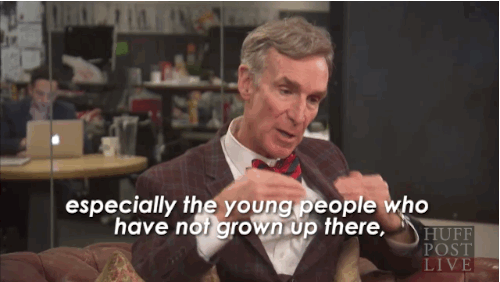

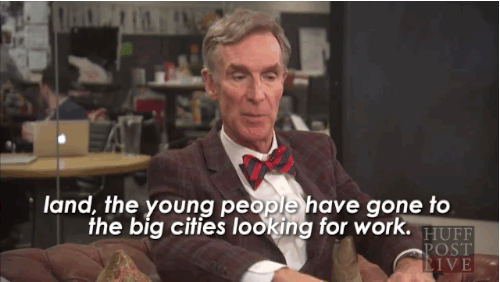
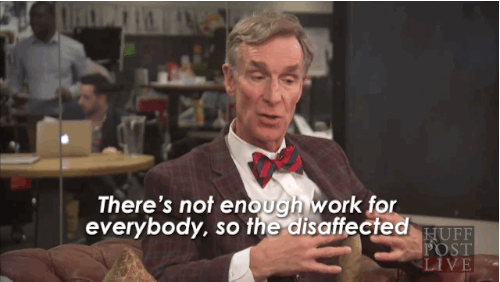
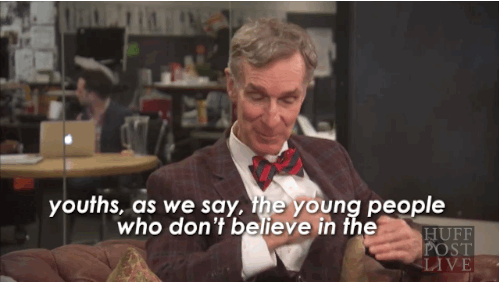
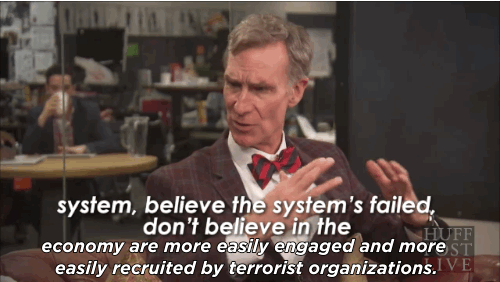
Bill Nye Explains The Connection Between Climate Change And Terrorism In Paris
President Obama made headlines Monday when he said during his remarks at COP21 that the climate change conference taking place in Paris is an “act of defiance” against terrorists who attacked the city earlier this month. Later on the same day, Bill Nye took that link a step further, explaining to HuffPost Live that the brutality in Paris was “a result of climate change.”
“This is just the start of things.”

10 reasons why cities hold the key to climate change and global health
The Scripps CO2 measurements at the Mauna Loa Observatory on the big island of Hawaii have shown that atmospheric carbon dioxide (CO2) levels climbed above the 400 parts per million (ppm). Because CO2 stays in the atmosphere for a very long time, some scientists say for millennia, our global fever has reached the point that no one alive today, and those that follow us, will ever know a world below 400 ppm again.
This week will be the last time anyone alive experiences a CO2 level below 400 ppm. (Saturday Nov 21, 2015)

Now that is pure adaptation!
As the days get darker and colder in much of the northern hemisphere, it’s easy to indulge in gloom. For the next few months, you’ll be shivering. You’ll be battling foul weather. Thanks to daylight saving time there will be no chance to see the sun after work.
The gloom leads to a common question: What can I do to cope with the dark and cold?
If you truly want to be happy during winter, though, this is the wrong approach to the season. Changing your mindset can do more than distracting yourself from the weather.
At first, she was asking “Why aren’t people here more depressed?” and if there were lessons that could be taken elsewhere. But once she was there, “I sort of realized that that was the wrong question to be asking,” she says. When she asked people “Why don’t you have seasonal depression?” the answer was “Why would we?”
It turns out that in northern Norway, “people view winter as something to be enjoyed, not something to be endured,” says Leibowitz, and that makes all the difference.
Lessons From The Far North
To be sure, there are some aspects of the near-polar culture that might be hard to emulate elsewhere. Small Norwegian communities are tightly knit, and strong social ties increase well-being everywhere. That said, there are lessons that can help anyone think differently about cold weather.
Ending slavery will also help save the one thing that connects us all... Earth.

Read it here.
“Desperate migrants from Myanmar and Cambodia are enslaved on fishing boats to strip the oceans of fish… in Brazil, young men are trapped by debt in work illegally logging the Amazon forest… Brick kilns in India, operated by bonded labourers, are fuelled with old tyres and used motor oil, spewing carcinogens into the air.”
REBLOG to educate your community about the impact of our everyday consumption.
